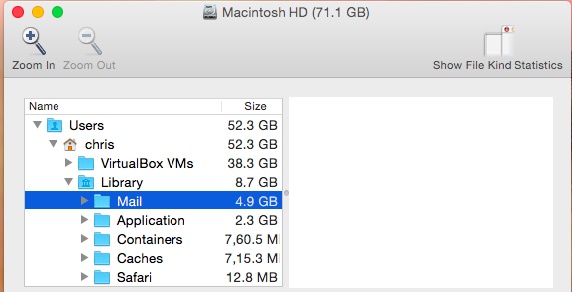

If one knows/trusts the primary hostname of the server they are connecting to, there is absolutely _nothing_ less secure about this setup than connecting to a matched hostname of a server.Įvery email client under the sun that supports SSL (except for Outlook) allows one to save a mismatched certificate and then use it without further ado and repeated nagging.

the hostname in the SSL cert simply doesn't match the hostname being connected to With the SSL certificate associated with the primary domain of the server.ī. And 99% of the time the people with hosting accounts do not have an SSL of their own, but the SSL port of is active an answers Microsoft should be ashamed of themselves for not providing a way to store a certificate and allow its use when it doesn't match the hostname being connected to.Įvery day, more and more hosting companies are deploying websites that are named-based and not IP based. I am hoping someone may have a suggestion on how this may be done. In Key HKEY_CURRENT_USER\SOFTWARE\Microsoft\Office\15.0\Outlook\Securityīut this did not change any behavior, and I still get the warning messages. I found a post that suggested to add Registry changes as follows: I know this feature is for security, however, virtually every single other email program I have used allows you to set an exception to ignore the certificate warnings, yet I do not appear to be able to do this with Outlook 2013. I thought I would post here first to see if Microsoft has maybe made changes to allow disabling this message. I have had this problem with Outlook for a long time now. The server you are connected to is using a security certificate that cannot be verified. I get the following message on all my IMAP email accounts: I am seeking to stop Outlook 2013 to stop showing me warnings because my certificates do not match. I have read about a guide on the regredit and outlook and security key a command for skip the control so the warning but didn't work.

Sorry, this reply doesn't solve my and other problem of this warning. I have read in Italian Outlook forum there is other people with the same issue where i have posted who are waiting for a solution. Thunderbird has not this problem but i need to use Outlook.Īlso i have tried to add the certificate who i see but this don't stop to warn me. My mail is working well but it's Outlook the problem. many hosting don't alow this and not in all case user can by a SSL because is very expansive. Server don't alow me to ask for a self-signed certificate. Thank you but this don't help me and other user. The other way to go would be to disable TLS/SSL on the mail server so a certificate isn't being requested anymore either. When you generate a new self-signed certificate on the server with the FQDN of the mail server as you publicly access it (for instance: ), then adding it to your Trusted Root Certificates on your computer will stop Outlook from warning User with this same issue without solution.Īdding the certificate won't help you since the name on the certificate is not the name that you are using. I have tried to add the certificate as specified in many help page but this didn't work, i always are seing the warning message and i read about many and many The certificate description is this is why i see the warning but emails work fine.

I have buyed a VPS so i have tried to contact the ISP and they as tell me the warning of Outlook is because VPS need a SSl so i have to buy SSL but is too expensive for me.Į-mail work well as i press yes every time so my problem is i want unabel Outlook to stop this annoising warning. But do realize that this is nothing more than a workaroundĪnd definitely not the preferred way to go. In case of a self-signed certificate and depending on the exact warning that you get, you might be able to work around the issue by adding the certificate as a Trusted Root certificate in Windows. See: Cannot verify Security Certificate warning Contact your ISP to help you correctly configure the certificate on the server or use the names which are actually on the certificate. Deactivating the warning will not solve your issue.


 0 kommentar(er)
0 kommentar(er)
